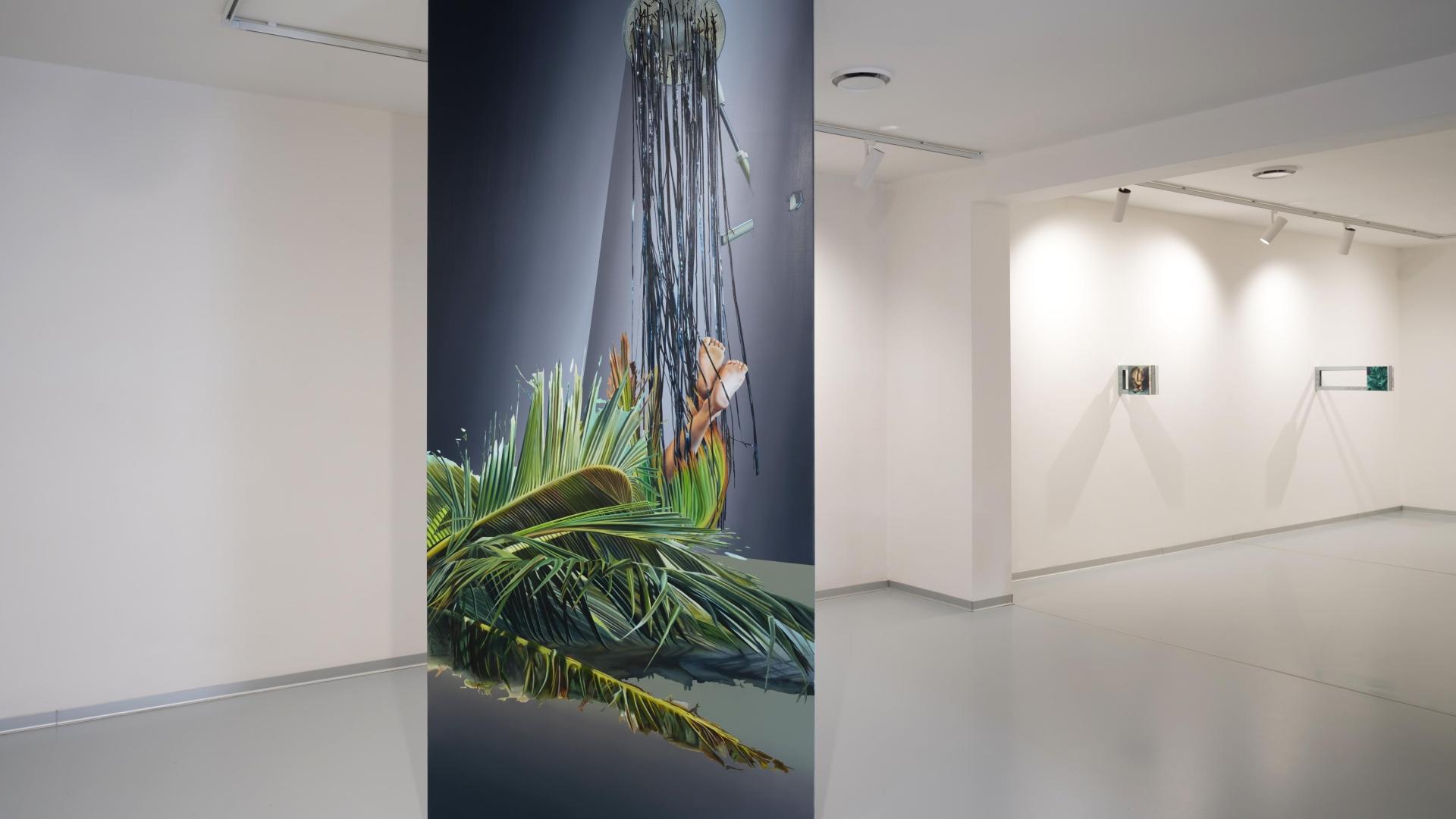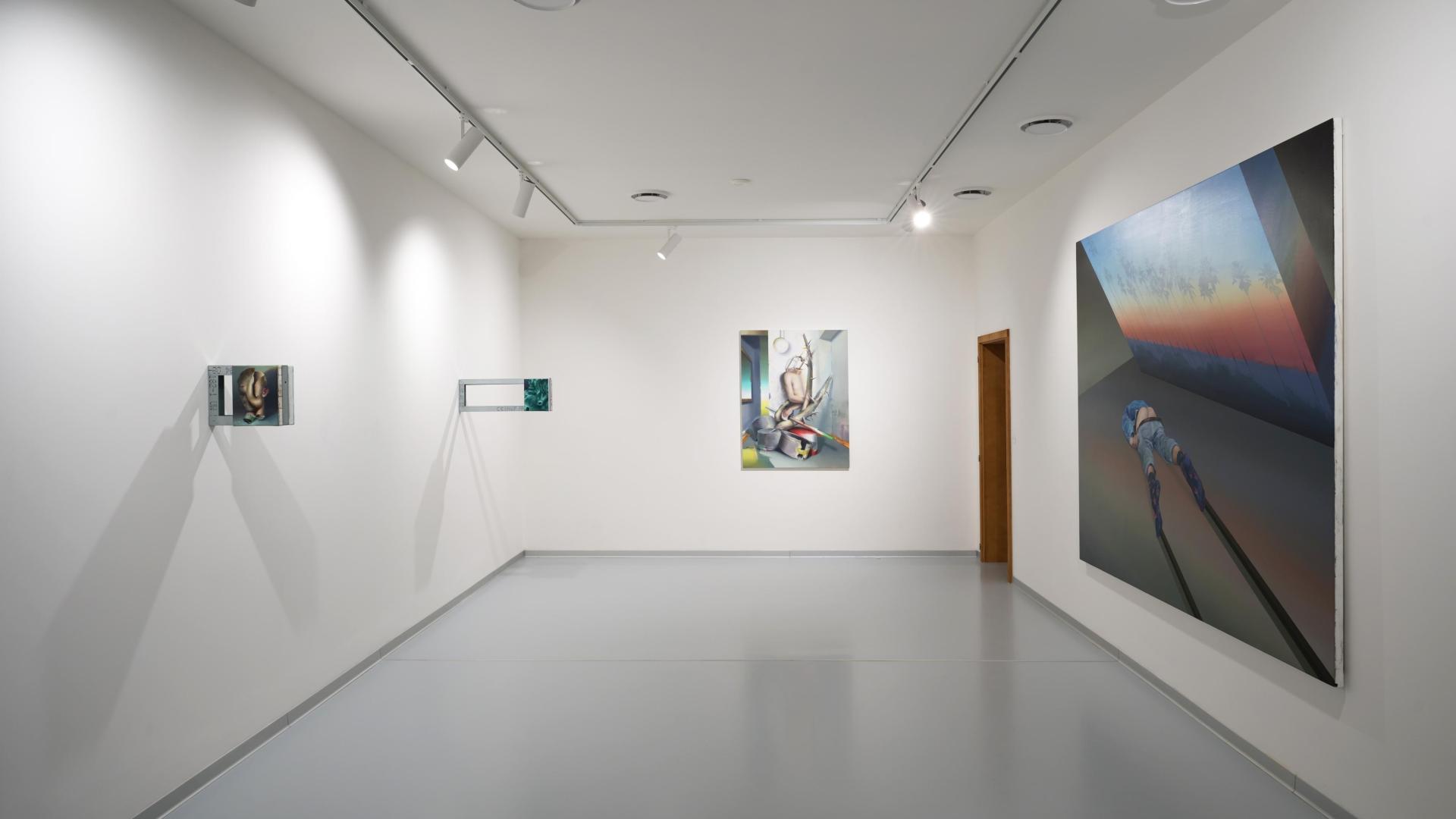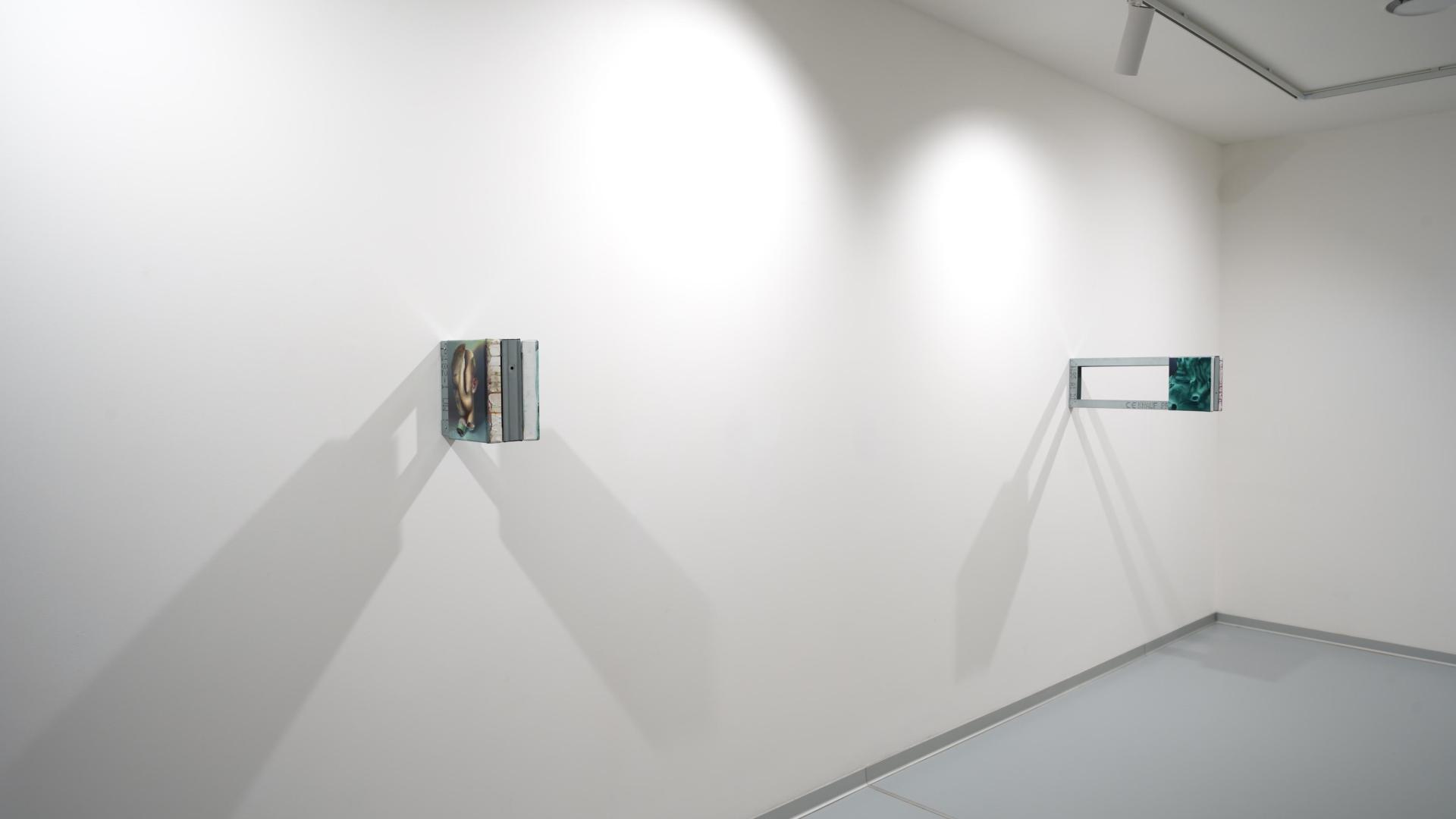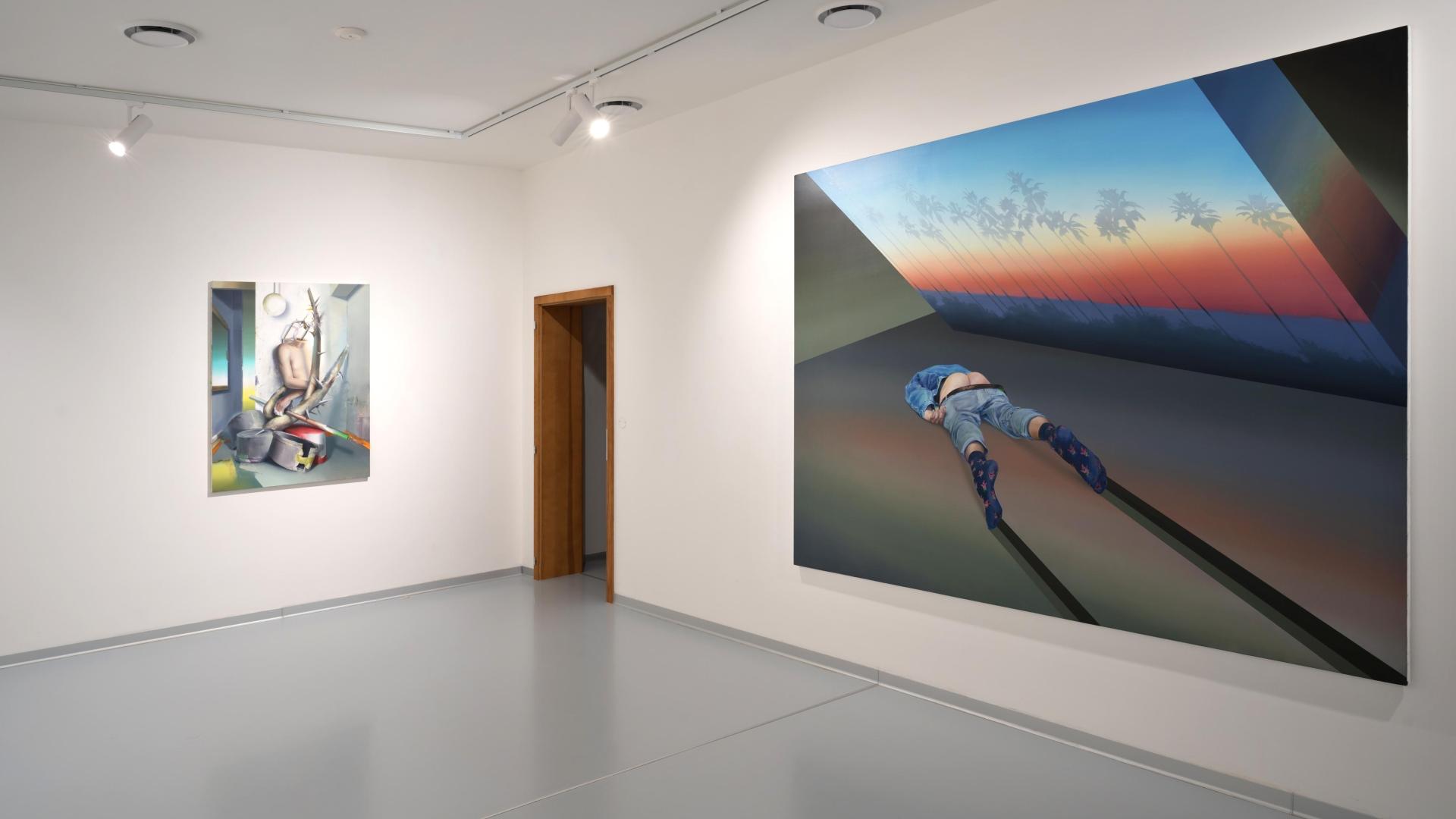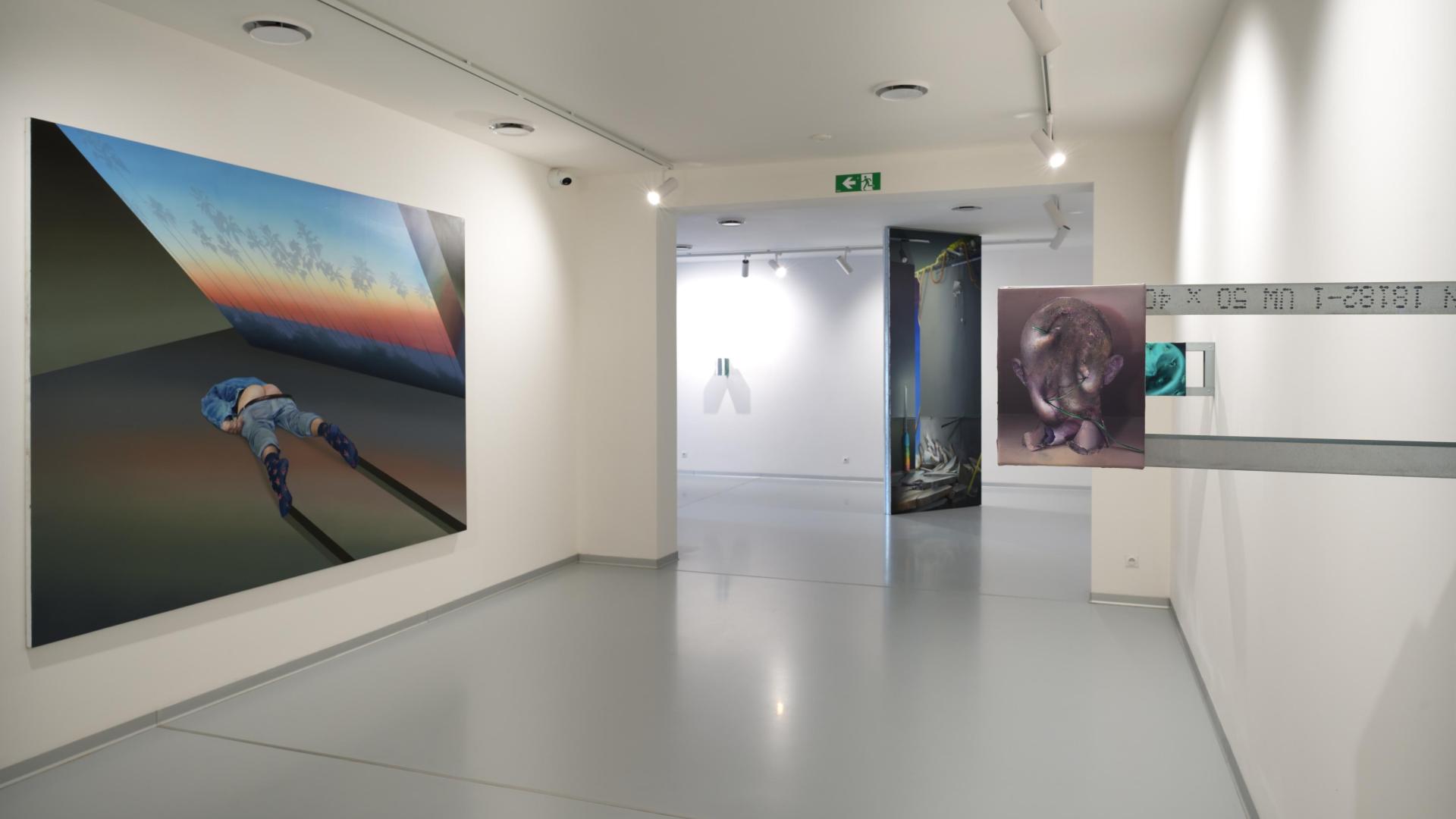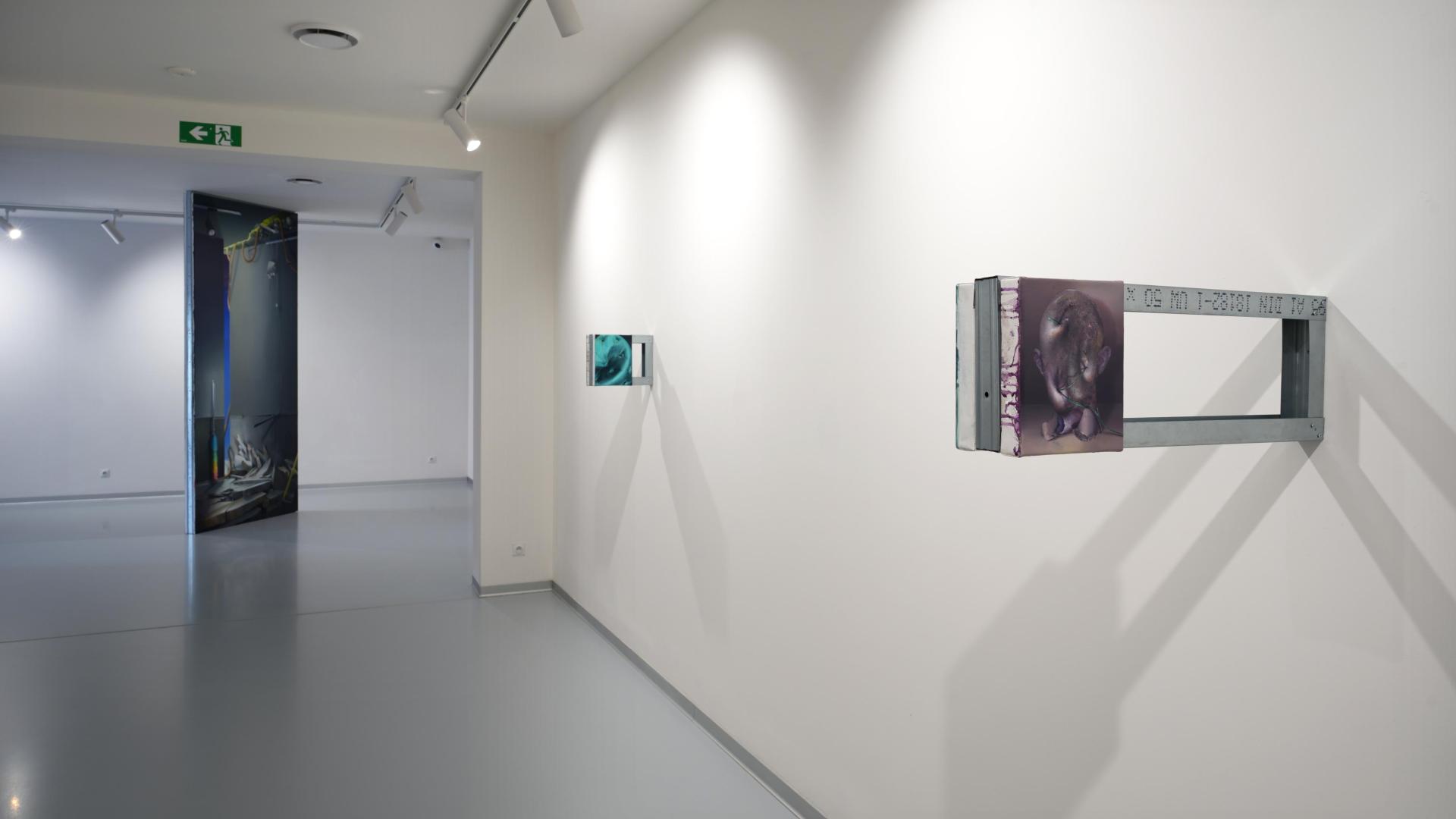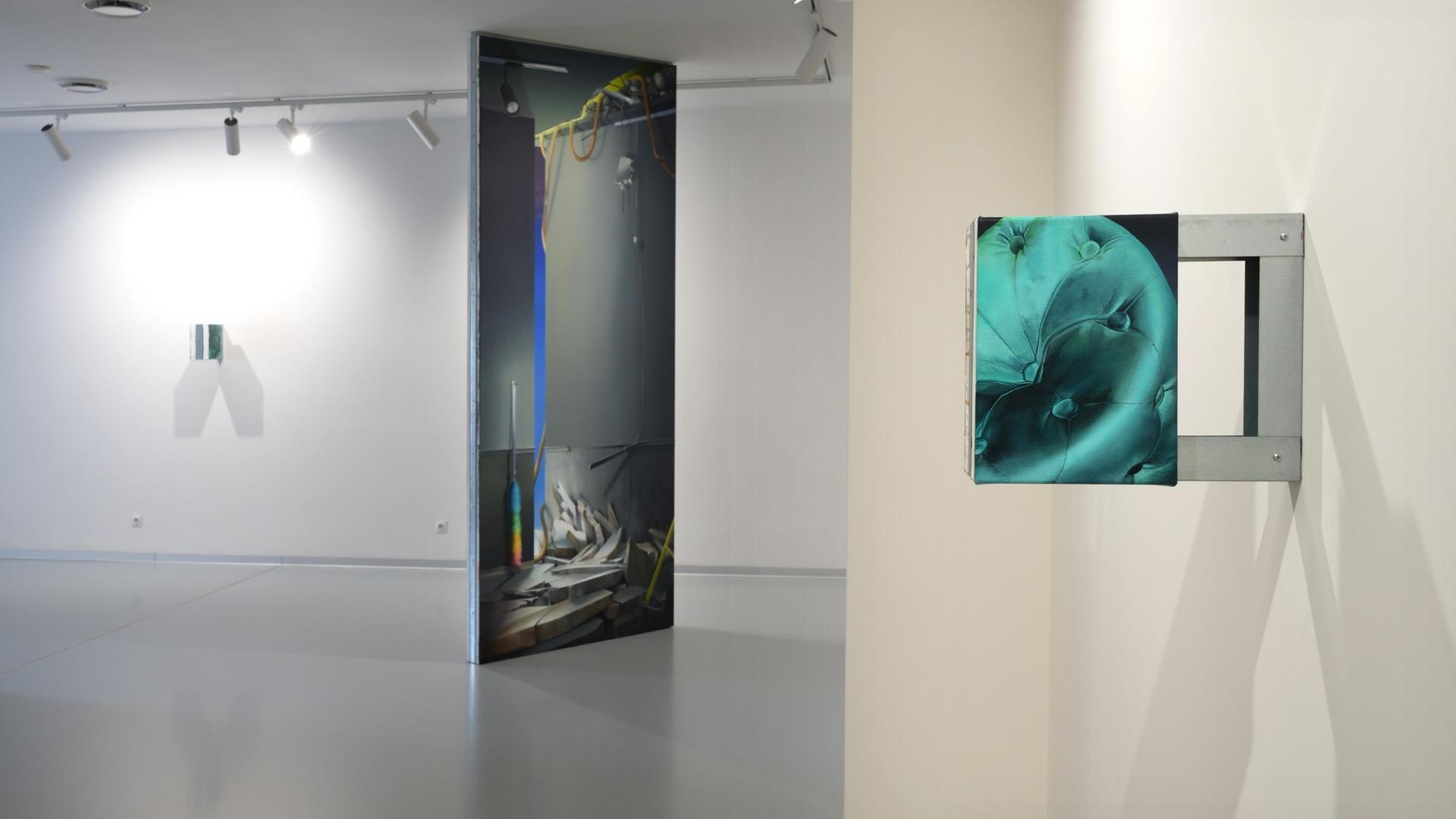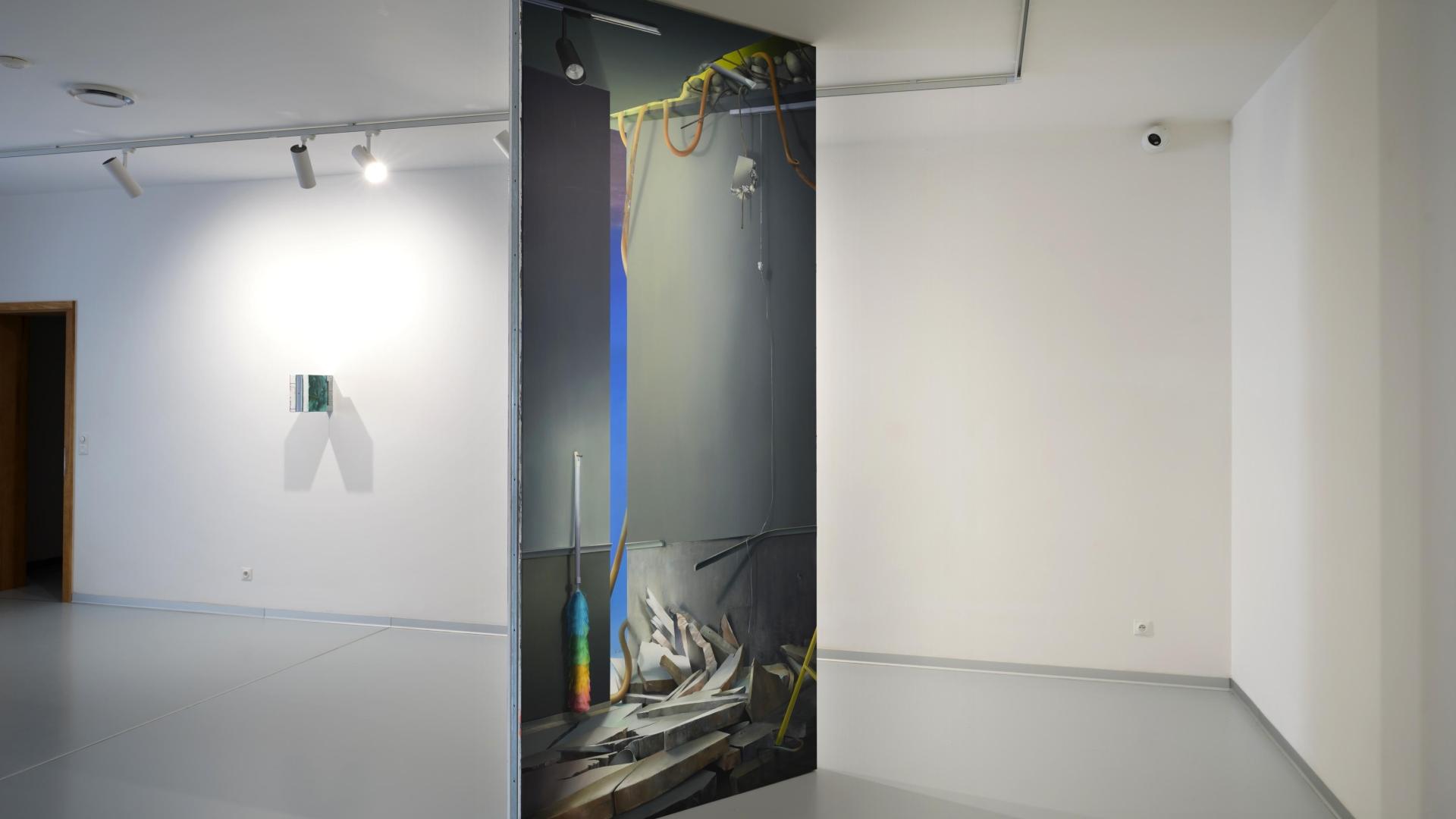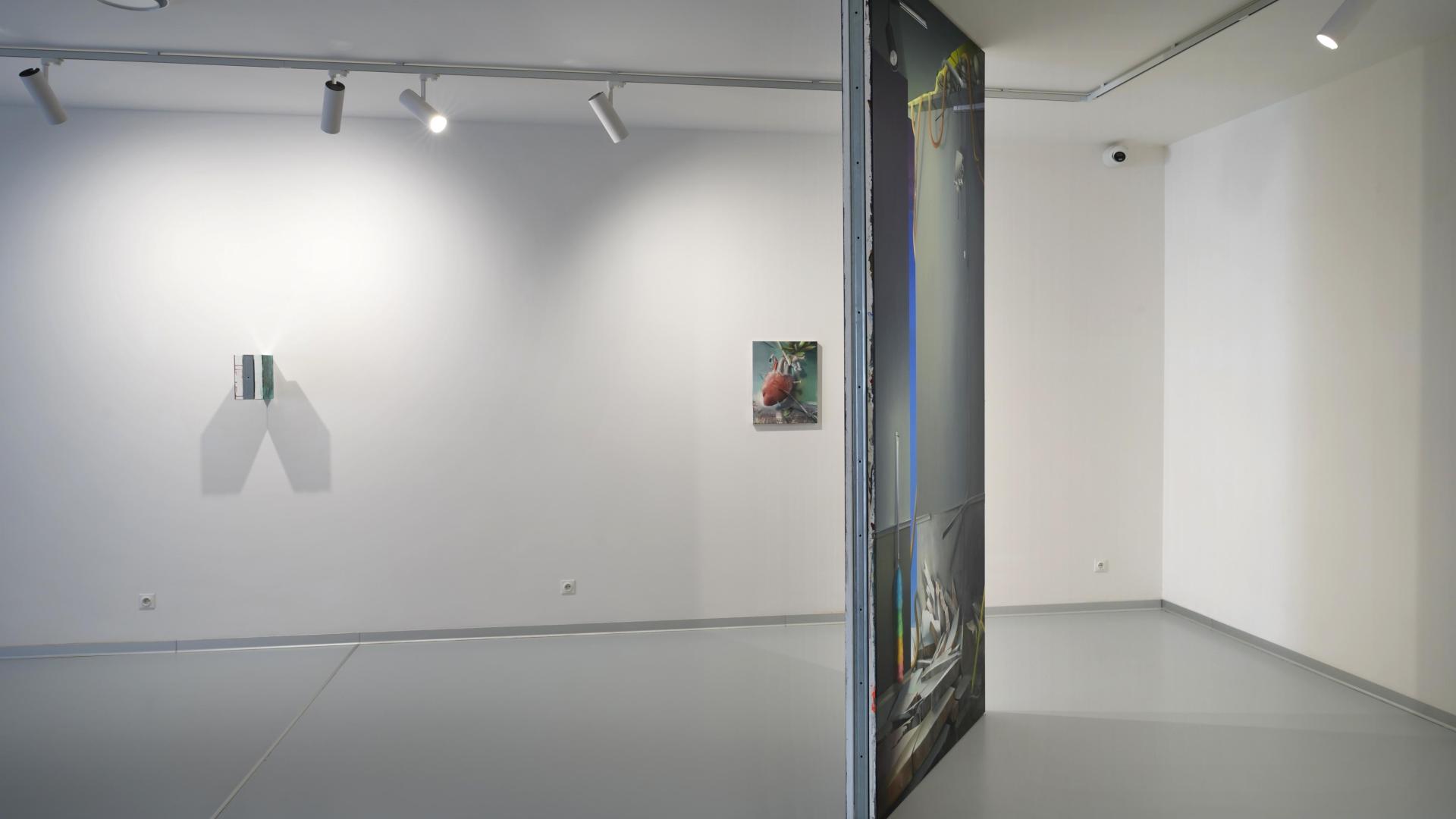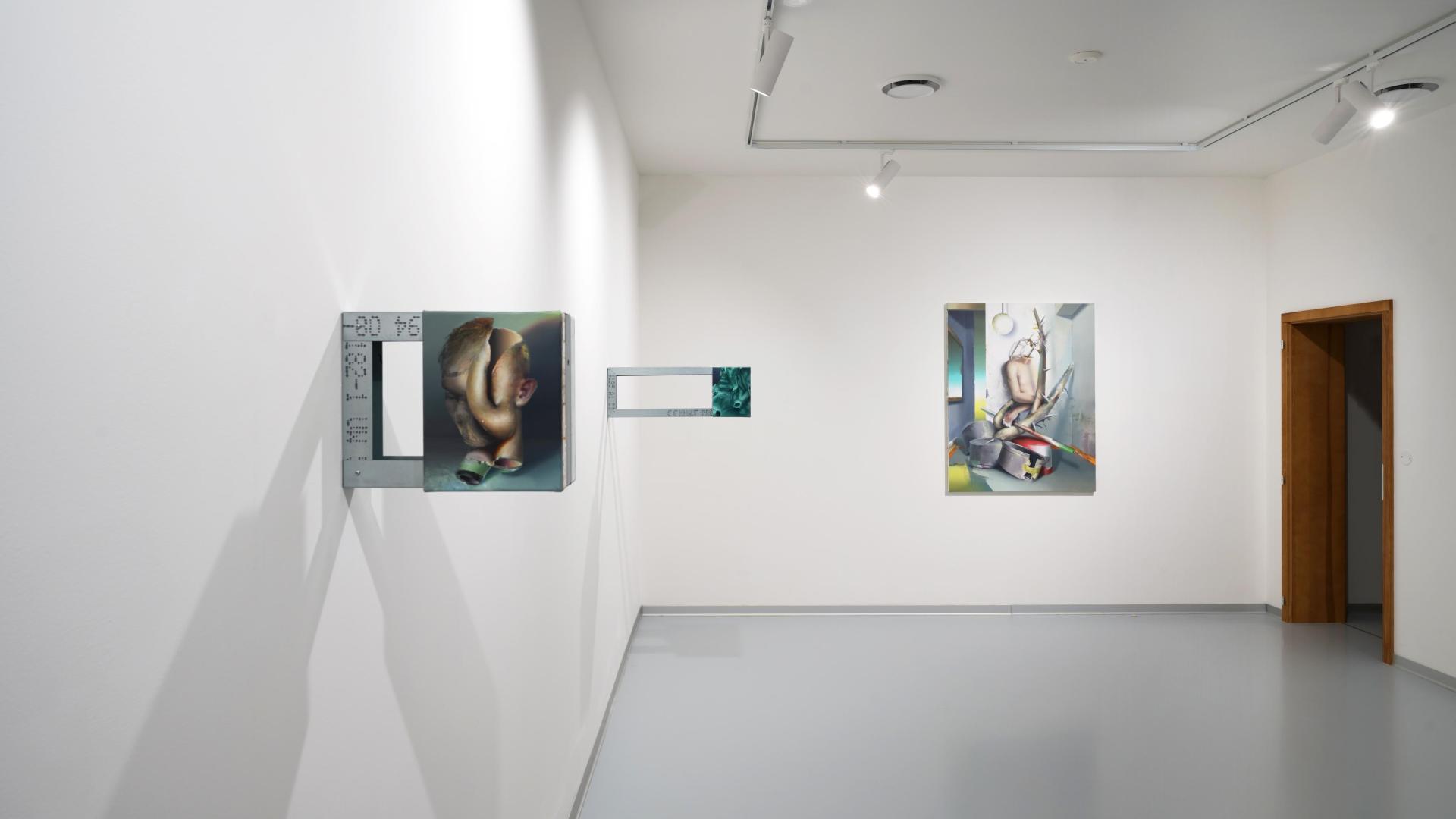
Soft Problems (with Barbora Mikudová)
—
Pekelné sáně Gallery, Kroměříž, CZ
Solo exhibition
Curator: Jan Čejka
This exhibition shows today’s world as a plurality of realities, in which everyone habitually creates their own individual environment with its own meanings and relationships. It is a world that is fast, ephemeral, and so saturated with information that these homes without walls are highly subjective yet at the same time fragile. For interpersonal relationships this requires a much higher degree of empathy – and among those who possess this quality in abundance are Jiří Marek and Barbora Mikudová.
Both artists were born in the 1990s, and they both have a remarkable sensitivity to situations, states and feelings related to humans’ anchoring in our world. They are both skilled at using metaphors, they are both far from a black-and-white mode of perception, and they are both unafraid to deform mimesis in service of expressing reality. Their works are able to express zeal, helplessness, nostalgia, pain, and many other intense emotions that in common speech are often expressed merely through words such as “nobody would understand me anyway” or “I have to deal with this myself” – even though everybody knows these emotions intimately. Both artists are able to capture the moments at which people feel most alone, allowing them to share these moments with others in a clear and intense way.
At the same time, however, they touch directly on some of the things that make today’s world a plurality of realities. For example, in the case of Jiří Marek’s paintings we may (to exaggerate slightly) get the impression of having taken a crash course in art history. His works manipulate the past quite deliberately. They are eclectic “ruins” – nostalgic, melancholy compositions in which we can sense prefigurations from past eras, whether through literal citations or through the overall atmosphere of the works. Yet his use of colour – and his handling of form and depicted items – gives his works a clearly contemporary stamp. They perfectly represent today’s approach to the past, when the past is no longer viewed as something dogmatic, ideal, or worthy of forgetting. Instead, the past becomes a kind of creative material for our everyday self-identification.
And what about Barbora Mikudová? She too expresses herself mainly through painting, and figural subjects are likewise important to her. However, instead of ruins she creates “anonymous spaces” influenced by what we can now see on the displays of our devices. She illuminates her compositions with artificial light and wrenches them out of usual spatial arrangements. Sometimes she deliberately works with specific angles of view or flattening effects. Her works capture environments in which information technologies are seen as a natural part of our everyday lives – environments which are at the same time interfaces between public roles and the intimate sphere, the general and the individual, the specific and the anonymous, or the real and the virtual.
Výstava ukazuje dnešní svět jako pluralitu realit, v nichž si každý skrze návyky vytváří individuální prostředí o vlastních významech a vztazích. Je to svět rychlý, pomíjivý a natolik nasycený informacemi, až jsou tyto domovy beze stěn vysoce subjektivní a zároveň křehké. Pro mezilidské vztahy to vyžaduje mnohem vyšší míru empatie a mezi ty, kteří ji mají zcela mimořádnou, patří i Jiří Marek a Barbora Mikudová.
Oba autoři, řadící se mezi umělce narozené v 90. letech, mají pozoruhodnou vnímavost vůči situacím, stavům, pocitům, souvisejících s ukotvením člověka ve světě. Oba umí užívat metafor, černobílost jim je vzdálená a nebojí se deformovat mimésis k vyjádření skutečnosti. Svými díly dovedou vyobrazit např. zápal, nemohoucnost, nostalgii, bolest a spoustu dalších intenzivních projevů, jejichž popis se v běžné řeči často omezuje na: „stejně by mi nikdo nerozuměl“ nebo „to si musím vyřešit sám“, přestože je každý důvěrně zná. Dokážou tedy zachytit i ty momenty, v nichž si lidé připadají nejvíce sami a umožňují je srozumitelně a intenzivně sdílet s ostatními.
Zároveň se však dotýkají přímo některých zdrojů, které za dnešním světem coby pluralitou realit stojí. Na příklad u obrazů Jiřího Marka lze v nadsázce získat dojem o absolvování rychlého kurzu dějin umění. Zcela záměrně se v jeho dílech manipuluje s minulostí. Jsou to jakési eklektické „ruiny“, nostalgické, melancholické kompozice, ze kterých je možné tušit předobrazy uplynulých dob, ať už doslovnými citacemi nebo celkovou atmosférou. Zároveň si však pomocí barevnosti, a vůbec skrze práci s formou a vyobrazených předmětů, obrazy ponechávají současný háv. Skvěle tedy reprezentují právě dnešní přístup k minulému, kdy uplynulé v čase už není něčím dogmatickým, ideálním, nebo zapomnění hodným. Minulost se stává tvůrčím materiálem pro vlastní každodenní sebeidentifikaci.
A Barbora Mikudová? Rovněž se vyjadřuje zejména malbou a též je pro ni důležitý figurální námět. Namísto ruin ale vytváří „anonymní prostory“ ovlivněné tím, co dnes lze sledovat z poza displayů. Své kompozice tedy nasvěcuje umělým světlem a vytrhává je z obvyklého prostorového uspořádání. Někdy cíleně pracuje i se specifickými úhly pohledu nebo efektem zploštění. Celkově pak v dílech zachycuje prostředí, v nichž jsou informační technologie brány již za přirozenou součást každodenního fungování. Prostředí, která jsou zároveň rozhraními mezi veřejnou rolí a intimitou, obecným a individuálním, konkrétním a anonymním nebo skutečným a virtuálním.

